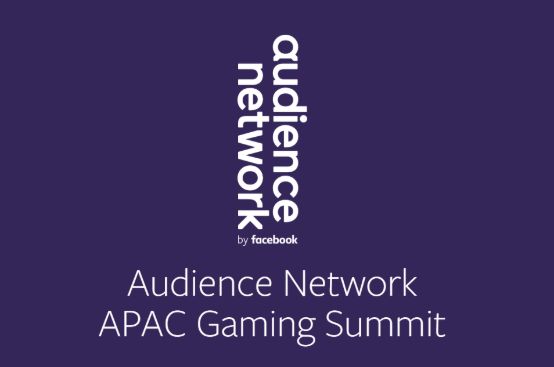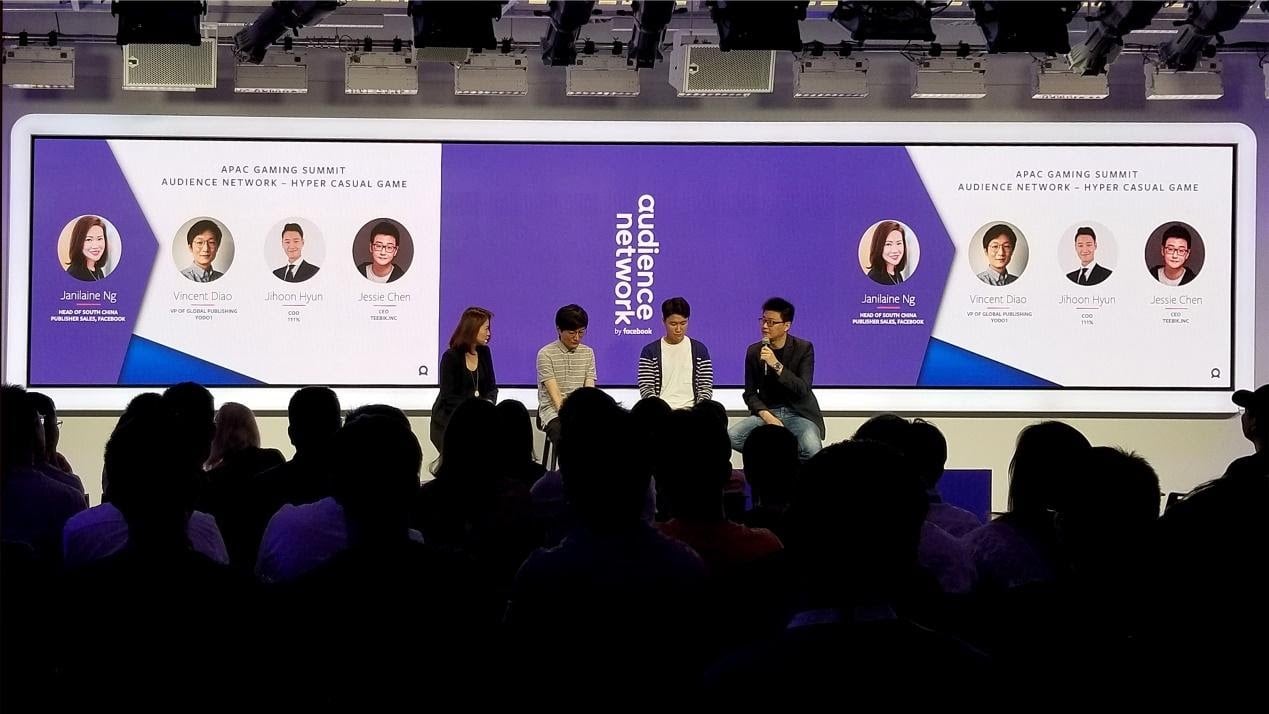- Wondering how to get Monopoly GO! free rolls? Well, you’ve come to the right place. In this guide, we provide you with a bunch of tips and tricks to get some free rolls for the hit new mobile game. We’ll …
Best Roblox Horror Games to Play Right Now – Updated Weekly
By Adele Wilson
Our Best Roblox Horror Games guide features the scariest and most creative experiences to play right now on the platform!The BEST Roblox Games of The Week – Games You Need To Play!
By Sho Roberts
Our feature shares our pick for the Best Roblox Games of the week! With our feature, we guarantee you'll find something new to play!All Grades in Type Soul – Each Race Explained
By Adele Wilson
Our All Grades in Type Soul guide lists every grade in the game for all races, including how to increase your grade quickly!
APAC Gaming Summit: Teebik Games CEO Jessie Chen on the Company’s Grand Ambitions
Last month in Singapore Facebook hosted the Audience Network APAC Gaming Summit, a hugely important event that saw games industry luminaries from all over the world gathering to discuss global marketing, among other things. During the summit Teebik Games CEO …

Last month in Singapore Facebook hosted the Audience Network APAC Gaming Summit, a hugely important event that saw games industry luminaries from all over the world gathering to discuss global marketing, among other things.
During the summit Teebik Games CEO Jessie Chen gave an exclusive interview during which he gave his views on current industry trends and shared some insights about his experience at Teebik Games.

Interviewer: What do you think were the key drivers of success for hyper-casual games in 2018?
Jessie Chen: Hyper-casual games are lightweight and instantly playable. They allow players to jump in without a lengthy onboarding process. These games are often addictive because their gameplay sessions are short and their mechanics are instantly understandable. Originality is also important – copying other games will not make your company successful.
The basic gameplay of various genres has been more or less perfected, such as shooting, clicking, jumping, arranging, etc. The innovation of hyper-casual games is that they combine the advantages of different genres perfectly. For example, in Snake VS Block the core gameplay comes from Snake but there are also elements of other games, which allows users to experience something both established and fresh.
Also, keep things simple, simple, simple. I think hyper-casual games have breathed new life into casual gaming. They are so simple that players can pick them up right away without any guidance.
Finally, predictable monetisation is key. Hyper-casuals offer developers a predictable monetisation curve and the ability to experiment quickly. That means it’s easy for developers to predict the revenue they will get from ad monetisation over time.
In general, making and releasing a game is a serious undertaking. Developers must ensure not only that they have a sharp sense of the game market, but also the ability to collect and utilize data. For players, hyper-casual games are just for filling downtime, but for developers they represent a demanding business that requires sophisticated calculations.
Many in the industry have criticised successful hyper-casual games for having aggressive monetization practices, such as a very high frequency of ads. How does your company determine the right frequency of ads in order to create both a positive user experience and a positive LTV for your games?
Hyper-casual games really grew in popularity globally in 2018. Strong advertising revenue guarantees that every popular product will monetize well during its short life cycle – lower entry barriers, low CPI, and strong advertising revenue make LTV beat CPI.
According to statistics, popular hyper-casual games can raise revenues from $10 million to $100 million in a short period of time. However, as the game market matures the player dividend gradually disappears. Therefore. Expanding the target user group has become the priority.
Teebik Games is a global publisher that integrates R&D operations with a core focus on promoting differentiated boutique games to players around the world. Its hyper-casual games have their own unique revenue model, which optimizes the user acquisition cost and communication efficiency of their games.
Relying on the considerable resources of our parent company, DotC United Group, Teebik Games has amassed tens of millions of users and several years of global promotion experience. High quality global traffic and deep global promotion provide a lot of product support for Teebik Games.
At the same time, the company developed its own cutting edge mediation SDK, which can be used for player behavior analysis. In turn it can enhance media buying skills through user-level advertising revenue data and programmatic optimization. It also helps to make the game more focused and establishes the appropriate advertising fill rate, optimizing eCPM to effectively increase traffic revenue for traffic owners.
Given that competition has intensified in the space, do you see payback time increasing and ROI decreasing? And how have you evolved your product, UA, and monetisation strategy to stay on top?
As competition and the demand for players becomes more and more intense, we help our developers by providing suggestions for new updates. This helps them to compete with other games and maintain a steady ROI increase. It’s important to make a major update every two weeks. In addition, I think there are three further points to consider:
1) Developers should look at the whole customer lifecycle, from discovery to nurturing an engaged and loyal community. Creating opportunities for social sharing and interaction is key to building sustainable games and driving revenue through higher value players. So it’s important to have the infrastructure in place to offer consumers a more customizable experience that extends beyond playing the game.
2) Focus on user acquisition. User analytics play a significant role in successful monetization and grow increasingly important as the cost of user acquisition increases.
3) It’s crucial for publishers to maintain good relationships with partners who can support them to create a more sustainable monetization model, from growing their audience on mobile to building engaged communities and enabling social sharing and interaction.
What is your advice to developers hoping to enter this genre in 2019? Do you have any best practices or pitfalls to avoid to increase their chances of success?
I think that 2019 will be a year of maturation for hyper-casual games. I anticipate that more and more experienced game studios will enter the space. The quality of the games will continue to improve, and the competition in user acquisition will become fierce. From the point of view of industry, I think there are three significant points.
1) Innovation is the foundation of R&D, and this is just as true for ostensibly simple games. Game development teams aiming to enter or continue to engage in this industry should strive to be innovative, and avoid copying others or following the herd. Quality is also paramount. Investing more time and energy into innovation and design is the only way to create good work.
2) Game platforms have became the focus of mobile game publishers. Maintaining a good relationship with major platforms such as Apple and Google is extremely important. Because of the fierce competition between these platforms, the issuer’s relationship must be properly handled, or the product may be affected by platform conflicts.
3) You need to have a strong marketing team to promote the product. By using a company with the right resources and experience, you can increase the number of users you’re reaching with relatively low user acquisition costs.
In fact, since Q4 2018 Teebik Games has begun shifting away from medium/heavy games towards casual and hyper-casual ones. We are still learning and exploring, but we have already achieved certain results.
Our casual arcade game Zombie Haters is one example. After its release last year it was quickly recommended by the App Store and Google Play. Gamers responded to its cute game style and unique and simple arcade gameplay, and it has reached 10 million downloads so far.
In the future, Chinese mobile game companies such as Teebik Games will continue to have more and more potential, growing in influence and driving the Chinese games industry to the top of the world.
More articles...
Monopoly GO! Free Rolls – Links For Free Dice
By Glen Fox
Wondering how to get Monopoly GO! free rolls? Well, you’ve come to the right place. In this guide, we provide you with a bunch of tips and tricks to get some free rolls for the hit new mobile game. We’ll …Best Roblox Horror Games to Play Right Now – Updated Weekly
By Adele Wilson
Our Best Roblox Horror Games guide features the scariest and most creative experiences to play right now on the platform!The BEST Roblox Games of The Week – Games You Need To Play!
By Sho Roberts
Our feature shares our pick for the Best Roblox Games of the week! With our feature, we guarantee you'll find something new to play!All Grades in Type Soul – Each Race Explained
By Adele Wilson
Our All Grades in Type Soul guide lists every grade in the game for all races, including how to increase your grade quickly!







